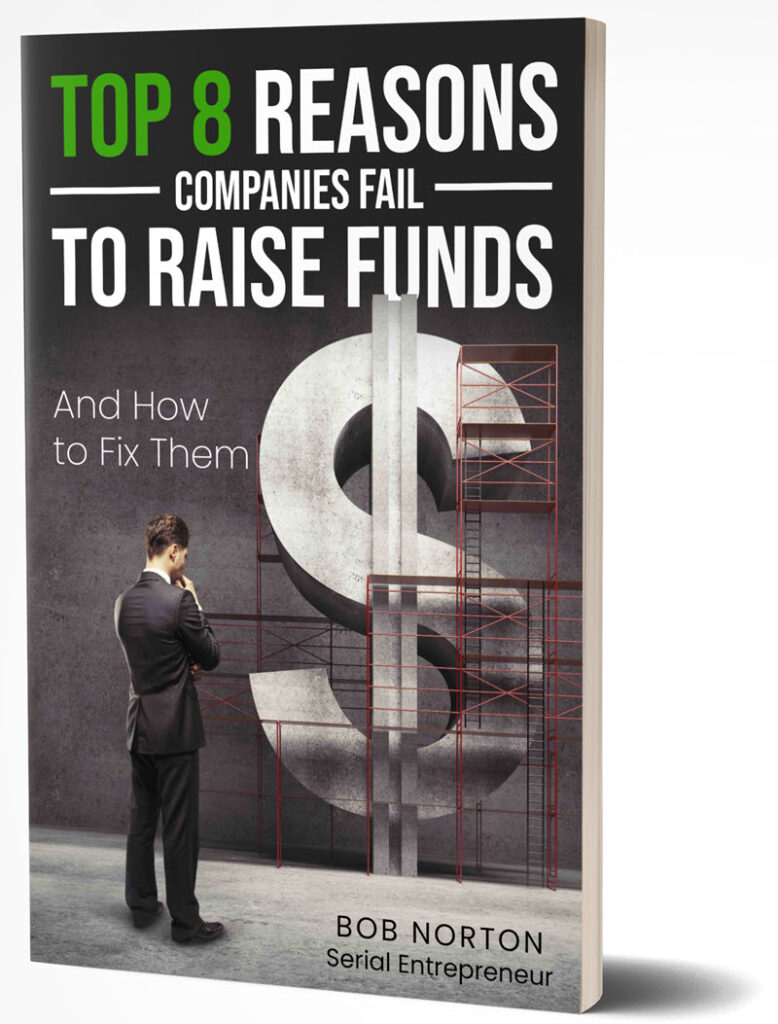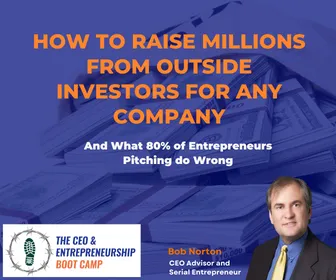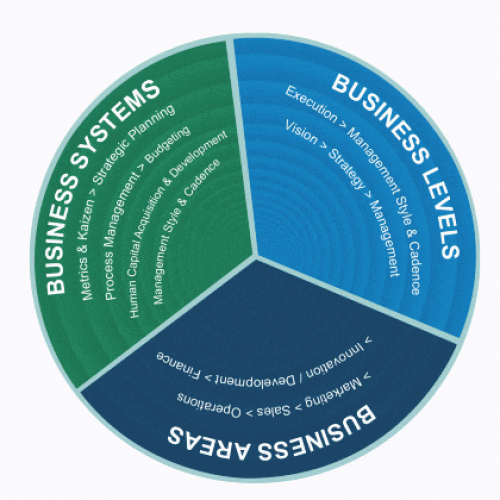Angels now look for the following in companies seeking investment:
- Large market potential, typically exceeding $1 billion within five years, with projected revenue of $20 million to $100 million. Multiple competitors are assumed to exist in this space.
- Solid product and launch strategy, including a compelling value proposition for a specific niche market identified as the ideal customer target. It is crucial to focus marketing and sales efforts where the pain points are most significant.
- Product development progress or ongoing work. Ideally, beta tests have been conducted with actual paying customers, demonstrating the transformation of an idea into a tangible product. Merely seeking funding for an idea is not sufficient, as ideas have minimal value and do not justify immediate valuation.
- A four to five-year financial projection that outlines all the funds required to achieve break-even cash flow, utilizing the investment available on the first day of financing. It is beneficial to have at least two financial scenarios to discuss with potential investors.
- A more experienced and complete management team. Angels now seek companies with not just a single entrepreneur, but also multiple senior individuals holding significant equity stakes. This demonstrates the CEO/entrepreneur’s ability to recruit talent, effectively sell their vision, and ensure long-term commitment.
VCs now demand substantial traction, requiring many paying customers instead of a beta product with only the development risk mitigated. This extended process increases costs and timelines, resulting in fewer seed funding opportunities. Consequently, the gap between angel financing and Series A VC funding has grown, making it challenging for companies to succeed unless they have exceptional teams and established enterprises. As a result, “virtual” companies are emerging at a higher rate to cope with this situation. Unfortunately, many excellent ideas and companies will.
Today, lots of good ventures will skip the VC stage entirely, because by the time they meet the new, higher VC criteria, it is just not worth it. They have many alternative sources of financing now and also can build a company to sell it, not IPO it. Most venture capitalists are in fact not currently in the “risk” business, and just like in the early 1990’s, they are looking to fund growth only for somewhat proven business models, where the risk is low. Scaling risk and team risk more than product and market risk.
Low equity market prices allow them to make their money on the way in no matter where they invest, so why not invest in lower-risk deals for the same price? Most are just not taking real calculated market and technology risks today, but instead are looking for “proven sales traction.”. In other words, little risk. Yes, there are some exceptions, such as where you have an investor with deep market knowledge and experience who feels comfortable that they understand the market enough to judge the technology and/or demand for the product. Of course, in the much longer development cycle of biotech, this does not work at all. Few funds are true to the venture capital industry’s original early-stage mission and not investing based solely on today’s headlines. Who can blame them though when they get more mature, less risky companies for the same price? However, you cannot raise funds by focusing on the very small number of early-stage funds. Companies need to push each lever they have to position their business for the larger market of angels and raise the overall probability that they will get funding.
Here are the ten things companies need to do in this altered financing environment to survive and raise angel funding:
1. BOOTSTRAP, BOOTSTRAP, BOOTSTRAP—Companies must pinch every dollar when possible. Get individual contributors to work for free (if they are unemployed and have a spouse earning money, they can stick with companies for a while), pay upon performance of a sale when possible, and do everything you can that does not cost real money. Unfortunately, the best people and more senior people do not need to work for free, and neither do good salespeople, so you must pay for quality when that position is critical to getting to your next milestone TODAY. The older “Virtual Company” model, where almost everything is outsourced except the company’s core value, is coming back. You do not need to have all full-time people, so you can pay a little higher hourly rate, but in total save a fortune because you are only purchasing 10% of someone’s time. Work from home, barter, use stock, and look for services and/or consulting revenue to help build the product. However, you must buy what is necessary to get to the next level and to save time. Many entrepreneurs forget that it is costing them whatever the monthly burn rate is too be there, so there are many cases where not spending money can cost you even more. Knowing the difference requires experience, good judgment with clear priorities, and vision. The best position to be in, always, pandemic or not, is with an “infinite runway,” whereby your income can cover base company expenses forever if needed. No one can predict the future well.
2. CLARIFY YOUR ENTIRE VISION FOR THE COMPANY– Flush out your vision more clearly (see my article: The Eleven Required Elements of a Successful Vision). Most entrepreneurs have a good product vision and/or market vision but not a clear vision of how to design and run the business in operations, financing, sales, and marketing. There are eleven key elements to a complete vision and most entrepreneurs I see have five or fewer worked out properly. Each major area of the business requires a strategy and tactical plan that will evolve with the company and any one of them can bring your company crashing down. And it must be validated by an expert (20+ years’ experience) in that area. The reality is that ideas ultimately get only 2% to 5% of the business’s value (as in a patent royalty), while most of the value will go to the team that gets it to market and to the investors who take the capital risk. The best way to preserve equity is to see #1 (Bootstrap). A vision consists of short-term plans that can realistically evolve into longer-term plans and strategies that can only be validated by experience.
3. HAVE A FOCUSED LAUNCH STRATEGY—This means ONLY ONE market niche as the initial target. Companies should do little more than list and size other markets, with no significant resources going to selling in them at this early stage. Acknowledge them as “future market opportunities,” with future being the key word. Almost no startup has the resources to go after multiple markets on day one. Startups need to be a big fish in a small pond. This means developing a very specific customer profile and probably an actual list of target customers in most cases where you have some unfair advantage over the competitive solution. (See article Boot Camp courses and article on Competitive Positioning.). The profile should include metrics for company size (if B2B), geography, and several other market-specific attributes that contribute to making the company a high-probability prospect sooner, not later. If companies do not know what these factors are, odds are they are not ready to look for any investors yet because they do not yet understand their market, niche, or “sweet spot.”.
4. BE PREPARED TO DELIVER ANY SIZE PITCH. Companies need to condense, focus, polish and practice their elevator pitch and presentation about the company before they give it even once. You will not have a lot of chances and need to go into every single meeting prepared. Anything else is like an actor showing up on opening night without any rehearsal. Several experienced people should first review everything. People who have raised money from angels before. It amazes me how many companies still cannot state what their company does in a few clear sentences! If you cannot articulate your Unique Selling Proposition (USP), you are not ready. Why will someone be compelled to buy your product over alternative solutions? Who specifically will NEED it most? To replace entrenched players, you need to be twice as good at half the price! Companies also benefit from a good tag line (3 to 7 words). Send people either a deck or an executive summary before any meeting, but if possible, first set the meeting date and time. Deliver it just-in-time, when possible, so it is fresh in their minds when you meet. Of course, today most first meetings are by video conference, so practice that too. Get good lighting (cheap at Amazon). You do not want to waste much time covering basics and you want to leave plenty of time for feedback and discussion about the future, team and questions. “TELLING IS NOT SELLING”. You are selling yourself, your concept, your team and your stock to everyone you meet, so treat it like any complex sales process and be prepared. The ideal deck is 12 to 15 slides delivered in 15 minutes. High level with the 10-12 top issues to communicate the vision, business model, market potential, etc.
5. Cash Breakeven in 6-12 months maximum– This was not the case most times in the past but today it is super helpful to get funding. Tune your plan to get to cash breakeven in 6-12 months on no more than $1 million! This is usually a difficult, but possible, task with good bootstrapping practices. Ultimately, you will have more company equity left for the team at the end of the day doing it like this anyway. One way to do this is to offer services while building your product and essentially get development funded along the way on consulting contracts but there are many ways to bring your capital requirement down. I call this a “Consulting to product flip strategy”. You just make sure you own the rights to what you develop along the way and the customer gets a license, not ownership. Work your financial model hard, strip down the product features to the Unique Selling Proposition (USP) you need on day one, use virtual employees, charge a higher price, get paid faster or upfront, get financing from vendors who will benefit from your success, the list is endless so use your advisors to revamp a plan to this time frame and cash requirement if possible. Investors will see you are frugal and will use their money well, resulting in a big valuation bump for their earl investment.
6. INVOLVE THE BEST MANAGEMENT TEAM YOU CAN GET EARLY – You need a broader management team than angels wanted in the past (a virtual team most likely). Many new entrepreneurs are going to be seen as a “techie with an idea”, not someone who can pull this off alone. This is because this is true. Building companies is art, not skill, and hence takes many years’ experience to learn. Get used to it! As in most cases, this is the reality. The people with the ideas are generally not experienced enough to develop a business around the idea because the ideas come from a different level of working directly with customers and technology. Maybe one out of every million people can take a company from startup to $200MM in revenue. When this happens, it is mostly because they have done it, or most parts of it due to very broad business experience. I can count on my hands and toes the Founders who have grown a company from $0 to over $1 billion, such as Bill Gates, Ken Olsen, and Michael Dell (all with serious bootstrapping stories) without this past track record.
Although lack of management team was acceptable in the past for the product development phase, there is no better formula for disaster than not having an experienced management team and/or CEO somehow very involved early on today. I have seen millions go down the tube because virtually all resources went to product development – the Founder’s area of expertise only, and not to other critical areas. Today you need to tap experienced people who have “done it before” in each major discipline early on. People with experience in all the key facets of launching a business into the marketplace. Anyone can hang the name “President” on their door, but this is the equivalent of allowing someone to do brain surgery on you who has just graduated medical school (or not). They might have “Surgeon” on their door, but I would not let them near anyone I know on the operating table without some “adult supervision” or more experience. Don’t fool yourself on this — virtually no real money is going to new grads or techies with an idea and no team. Surprisingly, many VCs learned this lesson the hard way all over again during the Internet bubble – trying to emulate that one-in-a-million shot of Netscape. Contrary to popular believe all the big names you know had serious management experience behand them at Google, Facebook, LinkedIn and all the other unicorns that made it. The Founder was smart enough to give up control and build the team, as well as share the upside in equity.
7. A FINANCIAL BUFFER – Odds are you will probably need some friends and family money first to get to the point of being “angel ready”. I recommend a year’s worth of personal expenses in the bank, plus the largest home equity line of credit you can get as a safety net before you give up your full-time job. Do not pay yourself, as that just might allow the same money to be taxed twice in some scenarios. Without a financial buffer you have no leverage and will certainly get a worse deal than if you have the time and money to make more progress first. Work your plan and product nights and weekends as far as you can before leaving your full-time job. Pre-sell friends and family many months in advance by telling them you will be looking for money later and have something to show first. Get their feedback from protype brochure months in advance.

<– Download my free eBook now here.
8. CORPORATE PAPERWORK: You need to get your “corporate” house in order with written agreements on ownership sharing that are fair and equitable from the investor’s perspective. You need a cap table and several more boilerplate documents from an attorney. If these are not clean, you can scare off investors who want to take a closer look, and you will have to start all over again. You do not need everything legally bulletproof, customized, or covering every possible scenario; that always costs too much and takes too much time. However, you do need written understandings that are solid and cover the most likely scenarios, such as what happens when any individual founder leaves. Founder’s stock must vest over time. No one should “own” stock on day one. That is a formula for disaster.
This is why some vesting of the founder’s stock is required before angel dollar one comes into the company! No one wants to invest in a company and have a founder leave, still owning a big piece of the company, which is then needed to compensate and motivate their replacement. I had this bite me in the ass with a young and ignorant founder who had ridiculous expectations. That set the company back six months or more as it destroyed a financing that took six months to line up. This is a common, avoidable disaster that kills many companies. The founders are part of the value, but only if they stay. Typically, founders’ shares must be restricted, and it must be required that the founders be an ongoing participant for about three to four years minimum. If a “founder” is passive, not working full-time or just waiting for the funding to come in while checking in occasionally, they are really not earning much equity during that period, as compared to people who are working full-time. Their equity needs to be tuned to their time and other contributions, based on individual market value for different roles; that is what shares and options are for; the flat percentages many companies use do not take into account this large variance in contribution due to time and market value. Working this all out early is easy, and it gets much harder over time. A formula based on time invested and market value of that person is best to divide the equity fairly and be sure an exiting founder does not kill your company. This takes down about thirteen percent of companies, according to a survey by CB Insights.
9. NETWORK AND LEARN: Attend many entrepreneurial workshops for years in advance of founding a company, as I did. They are everywhere now. Examples include Founders Institute, MIT Enterprise Forum, and WPI, and hundreds of other local groups that do pitch events and have guest speaker experts and Founders. This helps you to learn how to run business models in your head better and see how investors react to holes in plans, etc. Whether right or wrong, these reactions are real market feedback and must be dealt with somehow. LEARN SOME MORE Read at least a book a month that is business-related. Including audiobooks, I read four to six per month for almost fifteen years. Starting at least five years before I founded HomeView. You need to become good at recruiting and managing people before you find a company. So, learn management skills on someone else’s nickel. Some of the best that I recommend are: Good to Great by Jim Collins, The Lean Startup, Mike Porter’s Competitive Strategy, Sun Tsu and the Art of War, and Entrepreneur America by Rob Ryan. There are also many valuable short articles at www.CLevelEnterprises.com (see Resources tab) that can help you avoid common traps and develop some higher-level executive skills and perspective.

Access Webinar Replay Now
How to Raise Millions from Outside Investors for any Company – Learn the 30 other sources of capital beyond angel and VC and how to prepare a company and get it into the top few percent investors see.
10. GET A MENTOR – If the person in charge has not grown a company from $0 to at least $25 million in revenue, then at a minimum get a mentor CEO that is willing to help you regularly until you can afford a full-time or part-time “done it before CEO.”. Company style must shift gears radically several times during the first few years. You cannot afford to learn by trial and error here. Typically, an advisory board and board of directors, though helpful, cannot cover this need due to both lack of time and breadth of experience. You need someone available for at least two to four hours every week to review all major decisions. Even if this is a once-a-month review, you will save yourself lots of pain and money. And likely save your company too. CEO arrogance ills companies.
Only a seasoned, successful startup CEO can help here. I see many companies that think they are saving money but spend months and months of extra time burning cash making simple to avoid mistakes. They could save a small fortune with a little trusted advice. The predictable result is they run out of money, never getting to the next level where capital could become available. KNOW WHAT YOU DON’T KNOW AND COMPENSATE! The mentor must be someone who has successfully launched a startup business before. I do not mean a sandwich shop or dry cleaner, but a business with a similar structure and/or industry that your vision calls for today. This will be the best time and money you will ever spend because it is highly leveraged. Two or three hours per month of coaching from a “been there, done that” CEO will save you tens or even hundreds of thousands of dollars in errors, can generate sales faster, and will get you to critical milestones months earlier. At the end of the day, this means more company left for the team, so don’t be “penny wise and pound foolish.”. This will be the best money you ever spend because it will save far more than it costs.
Doing all these things can increase your chances of building a successful company and getting angel financing from one in a thousand to as high as 50%. There are few guarantees in life, but hang this list on the wall and review it every month, and I guarantee you will improve your chances greatly!
The most common mistake entrepreneurs make raising angel money today is going out to their best networking contacts BEFORE they are ready. They burn their best chances for money and other contacts in the chain. Mr. Norton will provide a “Financing Readiness Review,” including a full review of your presentation and executive summary, that is guaranteed to greatly increase your chances of success for a small flat rate.
Bob Norton is a long-time serial entrepreneur, CEO, and investor who founded six companies with four exits that returned over $1 billion to investors for a 25X ROI. Two others are still in development. He has trained, consulted, and advised thousands of entrepreneurs, CEOs, and boards since 2002. Mr. Norton works with companies to 2X to 10X growth rates and valuation using AirTight Management™, the world’s most comprehensive leadership operating system. He also helps companies raise capital to fund growth. He is also the founder of The CEO Boot Camp™and Entrepreneurship University™ for early-stage companies that have not reached product-market fit and $1M ARR.
What can we help you with today? Scaling, training, consulting, coaching?














